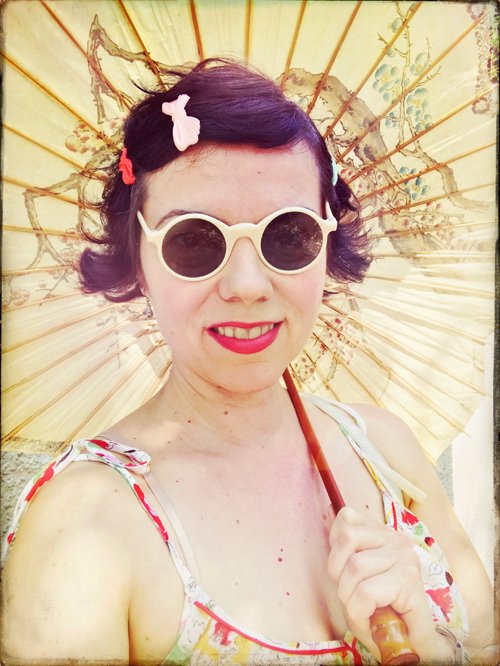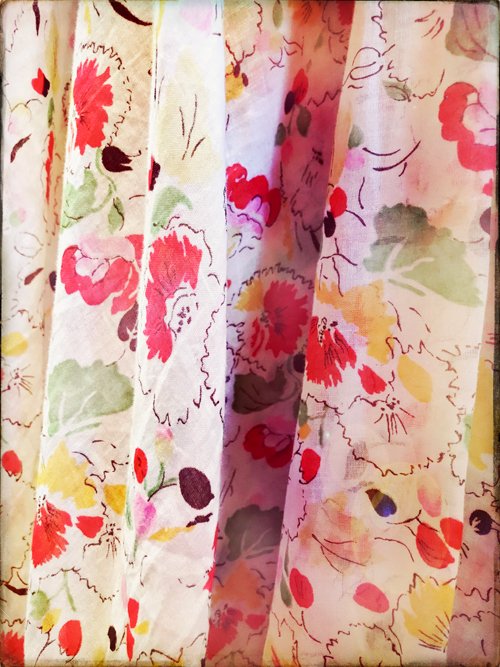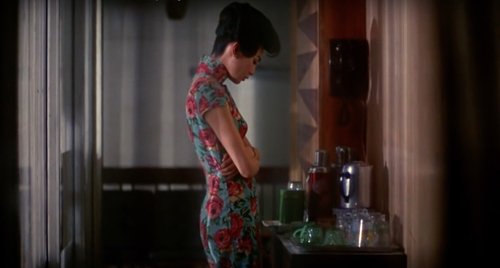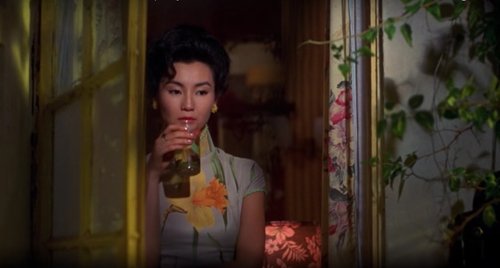Archive
- Behind the Screens 9
- Bright Young Things 16
- Colour Palette 64
- Dress Ups 60
- Fashionisms 25
- Fashionistamatics 107
- Foreign Exchange 13
- From the Pages of… 81
- G.U.I.L.T. 10
- Little Trifles 126
- Lost and Found 89
- Odd Socks 130
- Out of the Album 39
- Red Carpet 3
- Silver Screen Style 33
- Sit Like a Lady! 29
- Spin, Flip, Click 34
- Vintage Rescue 20
- Vintage Style 157
- Wardrobe 101 148
- What I Actually Wore 163
Walking Papers
 When I was in my late teens I started to wear broad-brimmed hats in summer for protection from the sun simply because I loathed the stickiness of sunscreen and decided I would only put up with it at the beach. From sun hats to parasols was a small step, and I began to collect parasols – because if a hat gave you some protection from the sun, how much more a parasol? (And from summer hats to their winter counterparts was a small leap, and thus a lifetime love affair with hats was born.)
When I was in my late teens I started to wear broad-brimmed hats in summer for protection from the sun simply because I loathed the stickiness of sunscreen and decided I would only put up with it at the beach. From sun hats to parasols was a small step, and I began to collect parasols – because if a hat gave you some protection from the sun, how much more a parasol? (And from summer hats to their winter counterparts was a small leap, and thus a lifetime love affair with hats was born.)
The first proper parasols I found were Chinese and Japanese oiled and plain paper parasols in thrift stores. They were not something I found often, but when I did they were usually inexpensive: under $10, some even under $5. The most recent acquisitions are the two that I am carrying in these pictures. I was thrilled with the flower-shaped one (possibly a Japanese one, with its cherry blossom painting), and the small one I deemed was very convenient to carry in my tote. And since I took this photo, I have found yet another – a green paper parasol.
I did see one oiled paper umbrella once which was priced around $20, but since it wasn’t significantly different to the ones I owned already, I passed on it. A quick look on Etsy ascertains that $20 is a very low price; there are many for $80 or more.*
 I always assumed that the coated paper parasols were lacquered, but in fact they are oiled to make them waterproof. As the oiled paper ages it becomes rigid, and easier to break, but with sufficient care one should last for 20 years. I suspect mine are past their use-by date and won’t test them out in the rain, although I’d love to!
I always assumed that the coated paper parasols were lacquered, but in fact they are oiled to make them waterproof. As the oiled paper ages it becomes rigid, and easier to break, but with sufficient care one should last for 20 years. I suspect mine are past their use-by date and won’t test them out in the rain, although I’d love to!
 Japanese family group, 1920s. (Image found on Pinterest; no original source linked.)
Japanese family group, 1920s. (Image found on Pinterest; no original source linked.) Kyoto 1955, by Kansuke YamamotoAccording to Wikipedia, the oiled paper umbrella originated in China, and spread to Korea and Japan during the Tang dynasty (7th–10th centuries). Early umbrella materials were mostly feathers or silks and only later were they covered in paper; it’s unknown when the oiled paper umbrellas were invented. You can read an interesting history about the Japanese wagasa (umbrella) and how they are painstakingly created by hand here. It’s not surprising to learn that the craft has dwindled after WWII, when synthetic umbrellas made their way to Japan. Today production of handmade wagasa is very limited.
Kyoto 1955, by Kansuke YamamotoAccording to Wikipedia, the oiled paper umbrella originated in China, and spread to Korea and Japan during the Tang dynasty (7th–10th centuries). Early umbrella materials were mostly feathers or silks and only later were they covered in paper; it’s unknown when the oiled paper umbrellas were invented. You can read an interesting history about the Japanese wagasa (umbrella) and how they are painstakingly created by hand here. It’s not surprising to learn that the craft has dwindled after WWII, when synthetic umbrellas made their way to Japan. Today production of handmade wagasa is very limited.
If I ever go to China again, or to Japan, a new one will definitely be on my list of desirable souvenirs. I wonder if anyone makes feather ones? What a fashion statement that would be – something else to add to my list of Holy Fashion Grails!
 Parasols on the beach, 1920s; click through to the link and scroll to the very bottom of the page to read more about beach parasols in this era.
Parasols on the beach, 1920s; click through to the link and scroll to the very bottom of the page to read more about beach parasols in this era. A lovely modern image of a woman with an umbrella in the snow
A lovely modern image of a woman with an umbrella in the snow
Fashion Notes
I am wearing a classic Chinese-style silk blouse with mandarin collar and frog fastenings by Sarah-Jane, which I found in a thrift store in country Victoria; the pants are modern, by a French label bought online. My bangles, ring and earrings are cloisonné, also found in thrift stores; the technique of cloisonné had spread to China by the 13–14th centuries where it became hugely popular; to the present day it is one of the world’s best known enamel cloisonné. The fabric necklace of insects and flowers was a souvenir from Hang Nga Guesthouse, popularly known as “Crazy House” for its architecture in Da Lat, Vietnam, and likewise, the beaded and embroidered slippers are a Vietnamese souvenir, bought in the main market in Saigon.
*All prices in Australian dollars
Photos: March 2018
Colours of Happiness
 Today is the International Day of Happiness! And I have spent today and much of the last few days in bed, or otherwise resting, as I have been sick with a horrible chest cold – hurrah! My workplace was having a morning tea in celebration of the day, and we were told to wear yellow; while I didn’t make it to that, I still managed to wear yellow – my kimono is yellow and white gingham.
Today is the International Day of Happiness! And I have spent today and much of the last few days in bed, or otherwise resting, as I have been sick with a horrible chest cold – hurrah! My workplace was having a morning tea in celebration of the day, and we were told to wear yellow; while I didn’t make it to that, I still managed to wear yellow – my kimono is yellow and white gingham.
I shall share instead some pictures from Saturday, when I visited my parents for lunch and wore a new favourite vintage 70s dress – a cotton voile spaghetti-strapped straight dress, belted at the waist. Its standout feature is the gorgeous print, in colours that really do make me happy! The dress is in very good condition; I found it recently in a thrift store. I am also wearing 40s sunglasses, 50s hairclips and am carrying a vintage Chinese paper parasol.
The label is Miss Jo Melbourne, and I surmise that was inspired by Jo from Little Women, the famous book by Louisa May Alcott. I don’t know anything about the label’s history unfortunately, and have only spotted one other dress – a brown polka-dot, 30s style frock – at Le Sourceress on Etsy. With such a romantic name, I’d love to know what else the label produced.
Photos: March 2019

In the Mood for Qipaos
 I don’t remember what first inspired my admiration for the traditional Chinese cheongsam, or qipao – very likely a Chinese film – but I am sure it had a lot to do with the sumptuous silk embroidered fabric that many are made from. Many years ago I once owned a beautiful example made from oyster-hued silk, embroidered heavily in red, silver and gold. Unfortunately it was a little small for me, and I stupidly culled it from my wardrobe in a mad fit of minimalism in my late 20s, since I thought I would never wear it. Ever since then I have been looking for a new one.
I don’t remember what first inspired my admiration for the traditional Chinese cheongsam, or qipao – very likely a Chinese film – but I am sure it had a lot to do with the sumptuous silk embroidered fabric that many are made from. Many years ago I once owned a beautiful example made from oyster-hued silk, embroidered heavily in red, silver and gold. Unfortunately it was a little small for me, and I stupidly culled it from my wardrobe in a mad fit of minimalism in my late 20s, since I thought I would never wear it. Ever since then I have been looking for a new one.
 Qipao of the Daoguang Period (1821–1850); Empress Xiaoshen, image from WikipediaThe history of the qipao is long and complicated, and (according to Wikipedia) its origins are controversial. Generally people believe that its origin is in the Qing dynasty (1644–1912), but some scholars argue that in fact the cheongsam was first worn two millennia prior, in a period between the Western Zhou dynasty (1046BC–771BC) and the pre-Qin era (221BC–207BC). Whatever is the truth, the qipao of the Qing dynasty could not be more different from the style common today. It was floor-length and loose, and cut in an A-line that revealed the figure not at all. Only the head, hand and the tips of the toes were visible.
Qipao of the Daoguang Period (1821–1850); Empress Xiaoshen, image from WikipediaThe history of the qipao is long and complicated, and (according to Wikipedia) its origins are controversial. Generally people believe that its origin is in the Qing dynasty (1644–1912), but some scholars argue that in fact the cheongsam was first worn two millennia prior, in a period between the Western Zhou dynasty (1046BC–771BC) and the pre-Qin era (221BC–207BC). Whatever is the truth, the qipao of the Qing dynasty could not be more different from the style common today. It was floor-length and loose, and cut in an A-line that revealed the figure not at all. Only the head, hand and the tips of the toes were visible.
 Chinese singer and actress Zhou Xuan wearing a cheongsam in 1930s in Shanghai; C.H. Wong Photo Studio; Image from WikipediaIn China, women’s liberation had as much effect as it had in other parts of the world at the turn of the 20th century, and the Republican period (1912–1949) is known as the golden age of the cheongsam. It is from this era that the cheongsam as we know it took form. Along with the ending of traditional foot binding, women began to bob their hair, and took to wearing this formerly exclusively masculine attire: one-piece clothing called Changshan or changpao. Now, too, the style was influenced by western fashion – the body-skimming bias-cuts popularised by Hollywood stars – hugging the figure, with hemlines gradually rising and formerly merely practical splits running much higher.
Chinese singer and actress Zhou Xuan wearing a cheongsam in 1930s in Shanghai; C.H. Wong Photo Studio; Image from WikipediaIn China, women’s liberation had as much effect as it had in other parts of the world at the turn of the 20th century, and the Republican period (1912–1949) is known as the golden age of the cheongsam. It is from this era that the cheongsam as we know it took form. Along with the ending of traditional foot binding, women began to bob their hair, and took to wearing this formerly exclusively masculine attire: one-piece clothing called Changshan or changpao. Now, too, the style was influenced by western fashion – the body-skimming bias-cuts popularised by Hollywood stars – hugging the figure, with hemlines gradually rising and formerly merely practical splits running much higher.
While the Communist Revolution virtually ended the popularity of the cheongsam, Shanghainese emigrants and refugees took the fashion with them to Hong Kong and Taiwan, and kept the style alive there.
 Maggie Cheung in Wong Kar Wai's In the Mood for Love, 2000
Maggie Cheung in Wong Kar Wai's In the Mood for Love, 2000 Maggie Cheung in Wong Kar Wai's In the Mood for Love, 2000Wong Kar Wai’s beautiful and bitter-sweet film In the Mood for Love is based on the Shanghai diaspora from the Revolution, and is set in Hong Kong in 1962. Its heroine, played by Maggie Cheung, wears a gorgeous collection of cheongsams – I remember seeing the film in the cinema when it was released in 2000, and I found the costumes no less breathtaking than the cinematography.
Maggie Cheung in Wong Kar Wai's In the Mood for Love, 2000Wong Kar Wai’s beautiful and bitter-sweet film In the Mood for Love is based on the Shanghai diaspora from the Revolution, and is set in Hong Kong in 1962. Its heroine, played by Maggie Cheung, wears a gorgeous collection of cheongsams – I remember seeing the film in the cinema when it was released in 2000, and I found the costumes no less breathtaking than the cinematography.
 I was very excited when I finally found my new cheongsam, on my Day of Yellow Bonanza, the miraculous Saturday a few months ago when I found several yellow items scattered in thrift stores across Melbourne, including a 1940s ballgown. The cheongsam is made from a luminous pale-yellow brocade of chrysanthemums, which is a popular flower in Chinese culture. It is one of four seasonal symbolic flowers representing autumn, and is also the flower of the ninth moon. The dress probably dates from the 60s, and the fabric is rayon. It actually needs to be tailored to fit me a bit better, which is why you see me with hands on waist to disguise the bagginess there. I am wearing it with a pair of patent yellow stilettos by Aldo, also found in a thrift store.
I was very excited when I finally found my new cheongsam, on my Day of Yellow Bonanza, the miraculous Saturday a few months ago when I found several yellow items scattered in thrift stores across Melbourne, including a 1940s ballgown. The cheongsam is made from a luminous pale-yellow brocade of chrysanthemums, which is a popular flower in Chinese culture. It is one of four seasonal symbolic flowers representing autumn, and is also the flower of the ninth moon. The dress probably dates from the 60s, and the fabric is rayon. It actually needs to be tailored to fit me a bit better, which is why you see me with hands on waist to disguise the bagginess there. I am wearing it with a pair of patent yellow stilettos by Aldo, also found in a thrift store.
Read more about the history of the qipao here, and about Maggie Cheung’s wardrobe for the sublime film In the Mood for Love here – I am inspired to watch it again.
 Maggie Cheung in Wong Kar Wai's In the Mood for Love, 2000
Maggie Cheung in Wong Kar Wai's In the Mood for Love, 2000
Photos: August 2018
Domestic Exchange
 I haven’t posted a Foreign Exchange story for a long time, and that is sadly because I haven’t been travelling overseas for an equally long time, but this woeful tale has its beginnings in a foreign exchange swapped for another kind of exchange.
I haven’t posted a Foreign Exchange story for a long time, and that is sadly because I haven’t been travelling overseas for an equally long time, but this woeful tale has its beginnings in a foreign exchange swapped for another kind of exchange.
The story starts in Vietnam nearly ten years ago, where I had a kimono custom-made for me from sumptuous silk brocade. I took that robe home and wore it to death over ten years, wearing it almost every morning except on the hottest summer days.
The day eventually came when it dawned on me that the kimono was actually starting to look rather shabby. There were worn patches and frayed edges. In denial at the prospect of setting it aside, I decided to ignore this observation and kept on wearing the kimono for a while longer.
I’ve spoken before how ruthless I am about shabby shoes – once they start to look disreputable, I become relentlessly unsentimental and throw the offending shoes straight into the bin without a moment’s hesitation. This is not the case with favourite garments.
… it still hung on a hook in my bathroom where I could gaze upon it fondly and sigh reminiscently.
Eventually, I stopped wearing the kimono, but it still hung on a hook in my bathroom where I could gaze upon it fondly and sigh reminiscently.
One day in a fit of madness, I gathered my resolve and took it to my sister Blossom, who over the many years we have been sisters, has generously made and altered countless garments for me.
She – and her husband, an involved observer one afternoon as she and I examined a portion of my wardrobe that needed rescuing – both assured me that indeed the kimono was too shabby to wear any longer.
I’d had the idea that something could be made of the good pieces of fabric, and I made my revolutionary suggestion … A CUSHION!
 I know, brutal – shocking even, all things considered; I did suffer some pangs for a while. But I figured if I had a cushion I would put it on my favourite armchair and lean against it every day, and thus extend the life of the kimono.
I know, brutal – shocking even, all things considered; I did suffer some pangs for a while. But I figured if I had a cushion I would put it on my favourite armchair and lean against it every day, and thus extend the life of the kimono.
The cushion doesn’t match the rest of my interior décor at all, and my yellow gingham kimono, though cheery, is not in the slightest degree exotic, but I don’t regret the loss anymore. I actually have a large collection of vintage dressing gowns, and enjoy sometimes wearing a 60s rayon satin with a stylised floral pattern. (I don’t wear it often for my cat Mimi attacks me in rage when I do – I think because it’s too slippery in my lap for her liking – she’s very opinionated.)
Maybe I’ll go to South-East Asia again one day, and then I’ll have another one made.
Photos: June 2009, March 2018
Jade Rainbow
 Many people are surprised to learn that jade comes in a rainbow of colours: lavender, red, orange, yellow, brown, white, black, and gray. After green, lavender is the most valuable, and black and red (as long as it has no brownish overtones) are also popular.
Many people are surprised to learn that jade comes in a rainbow of colours: lavender, red, orange, yellow, brown, white, black, and gray. After green, lavender is the most valuable, and black and red (as long as it has no brownish overtones) are also popular.
Jadeite, to give it its proper name, is a sodium and aluminium rich pyroxene, while the similarly coloured nephrite is a mineral of calcium, magnesium and iron. Nephrite is the native stone of China, with more than 5000 years of history in that culture, while jadeite was not introduced to China until the 1800s, by Burmese traders.
 Nephrite jade
Nephrite jade How cute are these tiny jade figurines?Red jade is not considered as valuable as the prized green ‘imperial jade’, which is a vibrant emerald colour and almost transparent. Once, the royal court of China had a standing order for all imperial jade, and it is amongst the world’s most expensive gems.
How cute are these tiny jade figurines?Red jade is not considered as valuable as the prized green ‘imperial jade’, which is a vibrant emerald colour and almost transparent. Once, the royal court of China had a standing order for all imperial jade, and it is amongst the world’s most expensive gems.
 Red jade: bangle from annaandjade.com; bowl from icollector.comTransparency is also highly valued, with the least desirable being completely opaque. I must be very contrary, because I deem the green common (you see so much of it, real and artificial), and I like opaque the best. Red is also one of my favourite colours.
Red jade: bangle from annaandjade.com; bowl from icollector.comTransparency is also highly valued, with the least desirable being completely opaque. I must be very contrary, because I deem the green common (you see so much of it, real and artificial), and I like opaque the best. Red is also one of my favourite colours.
When I was in Hong Kong many years ago, a carved jade bangle was on my wishlist, and accordingly I scoured the jewellers in one of the biggest markets for them. I was immediately drawn to this red bangle, attracted by its strong colour and weightiness. This type of jewellery cut from a single piece of rough stone is called a hololith, and results in a great deal of weight loss. For this reason hololiths cost more than several pieces joined together by precious-metal hinges.
 Lavender jade: stone from soaprocks.com.au; carved jade and diamond bangle from katybriscoe.comIt is carved with dragons and flowers, and certainly was expensive! I didn’t dither too long making a decision however, as I knew I would be unlikely to find another, and certainly not a cheaper one. The bangle did not have a ring that matched exactly, but the one I purchased is carved with ornamental swirls. I don’t wear them all the time – scared that I’ll smash them! – but as on last Friday when I wore them last, I always enjoy them when I do.
Lavender jade: stone from soaprocks.com.au; carved jade and diamond bangle from katybriscoe.comIt is carved with dragons and flowers, and certainly was expensive! I didn’t dither too long making a decision however, as I knew I would be unlikely to find another, and certainly not a cheaper one. The bangle did not have a ring that matched exactly, but the one I purchased is carved with ornamental swirls. I don’t wear them all the time – scared that I’ll smash them! – but as on last Friday when I wore them last, I always enjoy them when I do.


